What Agricultural Robotics Trends You Should Be Adopting and Why
The increasing demand for more sustainable farming practices is the most crucial driver for this adoption. Farmers can use autonomous platforms to implement variable rate application approach with precision and consistency, minimizing the negative impact on the environment. The most common types of self-propelling platforms include sprayers, which are used for applying agrochemicals to horticultural crops, and self-propelled mowers for weeding,
In conjunction with other technologies, like automation, artificial intelligence and IoT, self-driving tractors navigate through fields and challenging terrains autonomously, avoid obstacles, and keep crops intact by reducing the risk of accidents. They can work around the clock, increasing efficiency and reducing labor costs. Autonomous tractors can also operate at a consistent speed and maintain a programmed application rate, leading to more uniform crop growth and increased yields.
The latest technological advancements are also propelling rapid transformation. To sustain the further growth of agriculture, it's crucial for all stakeholders to closely monitor agricultural robotics trends and integrate them into their strategies.
Common Factors Affecting the Adoption of Robotics in Agriculture
Robotics is a discipline that combines software, mechanical, and electrical engineering to provide precision and automation. Robots have multiple roles in agriculture. In the field, they are responsible for monitoring conditions and applying fertilizer to harvesting; in animal farming, they handle tasks such as measuring feed rations to milking. Robots also contribute to maintaining optimal conditions in greenhouses by sanitizing the environment and monitoring plant growth and infestation.
Large agricultural companies and farm businesses have different reasons for adopting agricultural robots. However, the main reasons worldwide are mostly the same: the accessibility of next-gen technologies, labor shortages, and climate change.
Labor Shortage
Each year fewer and fewer people are seeking employment in agriculture. Only across the EU 2.5 million employees left the agriculture industry over the last 10 years. On top of that, by 2030 a 3% annual decline in agricultural employment (both managers and workers) will be noticed.
Labor shortage results in significant economic losses, increased food waste, and exacerbated food insecurity. Due to the labor shortage, more than USD 73 million in food was wasted on farms, including USD 27 million in wasted fruit and vegetables in the first half of 2022.
Climate and Environmental Changes
Climate and weather changes have long posed significant agricultural challenges. Droughts, heavy rainfall, floods, and the direct impact of climate on water and land negatively affect crops, livestock, soil, water resources, rural communities, and agriculture workers. In response to these formidable challenges, it is vital for farmers to embrace new technology-driven solutions, especially agricultural robotics. By doing so, not only do they address current obstacles but also propel agriculture forward, fostering adaptability and flexibility to future challenges.
Technologies Proliferation
Agriculture has undergone three major revolutions — from hunting-gathering to settled food production. From the first use of machinery and chemicals to the rise of bioengineering in the second half of the last century. However, many argue that agriculture might undergo yet another fourth revolution driven by fast technological advancements, especially in AI and agricultural robots, which can easily solve various problems, including labor and climate challenges.
Each year, there is a growing interest in research on robotic systems for agricultural applications in the tech community. Scientists, engineers, and companies worldwide are working to enhance existing technologies and develop new robots for agricultural purposes.
Technical Drivers for Agricultural Robotics Development
Precision Agriculture
Precision agriculture or precision farming, though lacking a universally agreed-upon definition, generally involves collecting specific data from a particular place and time and using that information to provide farmers with data-driven insights. These insights enable optimizing resource management by precisely applying inputs, such as water, pesticides, and fertilizers, resulting in more efficient farming.
Besides, precision agriculture is most effective when using robotics as it yields the most substantial benefits of increased profitability, reduced crop input application, and environmental protection, helping in the fight against the negative effects of labor shortages.
Syngenta, one of the world’s largest agricultural companies, transforms the traditional agri sphere into precision agriculture, using data-driven insights combined with robotics. The company uses drones equipped with powerful cameras and sensors. The devices scan crop fields and create high-definition images, providing incredible data insights. Their field trial sites are equipped with environmental sensors to gather data on weather, soil, pests, and diseases to utilize that information for the growers' benefit. Using every insight possible, they aim to leave no data behind.
Internet of Things
Digital technologies in agriculture have historically been hindered by connectivity problems and high costs. However, better opportunities appeared with the rapid development of mobile networks and the integration of satellite networks with mobile, which provide coverage anywhere, along with falling sensor prices. Now, affordable and accessible IoT devices connected with farming software and robots allow farmers to gather and analyze data and receive actionable data-driven insights.
Data-Driven Farming
The use of data-driven robotics systems in the agricultural value chain can significantly increase revenue, efficiency, productivity, and profitability. Robots and robotics systems equipped with multiple sensors, sampling equipment, and GPS autopilots allow collecting data on soil, weather, crops, animals, machinery, and equipment information. This raw data can be further processed and analyzed by AI/ML to yield illuminating insights that help farmers improve their decision-making, products quality, and services.
Before implementing AI analysis, it’s essential modernize a data storage and management system. We recommend adopting an advanced data platform that can be further enhanced with AI and predictive analytics.
Case in Point: One of such systems Infopulse created for an agricultural holding MHP that needed to streamline data management and enhance precision agriculture across 6,000 crop fields. A modern data platform facilitated data aggregation, storage, and analysis. The platform's benefits included optimized time and costs, improved decision-making through analytics, reduced equipment downtime, and enhanced accuracy in crop field operations.
Artificial Intelligence in Agriculture
Even though artificial intelligence has been used in the agro industry for almost forty years, its user expansion to robots in agriculture has made it one of the most promising techs in the sector. As it is not a standalone technology, AI is integrated into other tech solutions, relying heavily on inputs from IoT devices, satellites, cameras, and sensors to help robots execute tasks more efficiently.
AI actively utilizes its two main subsets for agriculture needs — machine learning (ML) and deep learning (DL). With the ability to improve itself over time, ML is often applied to crop management, including yield prediction based on satellite data, weather, soil conditions, and other inputs.
Deep learning is mainly used for pest and disease monitoring and identification. For instance, John Deere, one of the biggest agricultural equipment producers, uses such technology that can detect weeds among soybean, cotton, and corn with the help of cameras and processors for spot spraying.
Supporting all levels of agriculture production, artificial intelligence can monitor, diagnose, and optimize various operations, as well as provide farmers with real-time data relying on robots to perform tasks.
AI can be used not only in agricultural production but also for the optimization of common business operations, like sales, supply chain, and logistics.
For example, Infopulse data engineers created an ML-driven sales forecasting solution for an agro producer with an 80-90% accuracy rate for weekly and monthly projections. The implementation yielded numerous benefits, including optimized production planning, improved warehouse stock management, streamlined logistics, and a drastic reduction in the time required for sales forecasts—from days to minutes.
Automation Solutions
Although it is possible to achieve automation without a robot, automation and robots in agriculture are deeply intertwined. Autonomous farming solutions come in various levels of operator support, from semi-automated or semi-autonomous technology to fully automated or autonomous systems. Automation has significantly improved the capabilities of agricultural robots, making them more versatile, efficient, and cost-effective.
Overall, the use of robots in agriculture and automation is becoming wider every year. Especially robots become popular for vineyards, orchards, and vegetables farms.
The Main Agricultural Robotics Trends
Agricultural robots may include drones, automated tractors, milking robots, automated harvesting systems, and many more. As farmers increasingly recognize the transformative potential of robots, they will become lasting trends in the agricultural landscape for the following years. Here are some of the most requested robots in agriculture these days:
Agriculture Drones
The agricultural sector is undergoing a technological boom as drones, or unmanned aerial vehicles, have played a significant part in the technical revolution of agriculture. According to a recent research, the size of the agriculture drone market is estimated to reach USD 17.9 billion by 2028 from USD 4.5 billion in 2023, growing at a CAGR of 31.5% during the forecast period — 2023-2028. As of right now, the United States is the country that has adopted drones the most in the agricultural industry, followed by Europe.
The rise of agricultural unmanned aerial vehicles is primarily influenced by the demands of precision agriculture. Being initially used for reviewing crops, drones now have a much larger arsenal of functions, from spraying pesticides and fertilizers to taking care of precision agriculture on a vast territory. Equipped with cameras and sensors powered by artificial intelligence, they give farmers a complete view of their fields, helping them make educated decisions in real time, optimize resource use, and improve efficiency.
Drones are integral in helping farms fight labor shortages and climate change. Agribusinesses can use drones to spray fields accurately, saving on agrochemicals and helping the workforce being less exposed to chemicals too.
Another practical application of drones is for crop and vegetation analysis, which is often performed faster compared to manual alternative. The devices provide detailed images of crop fields, enabling farmers to track crop growth, detect anomalies, identify deficiencies or diseases, and plan targeted interventions to maximize crop yields.
Milking Robots
The same rapid development is also expected in the milking robotics market. It is expected to grow from USD 3.2 billion in 2024 to USD 5.3 million by 2029, registering a compound annual growth rate of 10.8%.
The purpose of the technologies in livestock is the same as that used for the field: routine tasks automation, collection, analysis, and providing insights from data to improve outcomes. One of the most effective robotic trends in livestock farming is milking technology, created in Europe to manage labor shortages in dairy farms and achieve efficiency, productivity, precision, and cost-effectiveness. Now, more than 1300 dairy farms worldwide are milking their cows automatically.
Milking robots are automatic machines or milking systems (AMS) that obtain milk using computers, sensors, and controllers to automate the milking process without human intervention. The cows can be milked throughout the day, which results in an average of 2.5–3 milkings per day and a 10–15% higher production. Such robotic systems are automatically cleaned and sterilized. In addition, they provide an analysis of the milk’s characteristics and cow health that allows farmers to decide on individual cows, rather than for an entire herd, and better manage their herds.
Autonomous Tractors and Platforms
One of the most prominent trends in robotics adoption for agriculture during the last years has been autonomous tractors and platforms, and self-propelled platforms for horticulture, which includes vineyards and orchards. The worldwide market of autonomous tractors was valued at USD 2.4 billion in 2023 and is estimated to hit the USD 7.1 billion mark by 2028, with a compound annual growth rate of 24.0% from 2023 to 2028.
The increasing demand for more sustainable farming practices is the most crucial driver for this adoption. Farmers can use autonomous platforms to implement variable rate application approach with precision and consistency, minimizing the negative impact on the environment. The most common types of self-propelling platforms include sprayers, which are used for applying agrochemicals to horticultural crops, and self-propelled mowers for weeding,
In conjunction with other technologies, like automation, artificial intelligence and IoT, self-driving tractors navigate through fields and challenging terrains autonomously, avoid obstacles, and keep crops intact by reducing the risk of accidents. They can work around the clock, increasing efficiency and reducing labor costs. Autonomous tractors can also operate at a consistent speed and maintain a programmed application rate, leading to more uniform crop growth and increased yields.
Automated Harvesting Systems
In 2023, the automated harvesting sector reached USD 2 billion and is expected to reach USD 2.76 billion in 2028, with a compound annual growth rate of 6.6%. Automated harvesting robots are currently being used for precision agriculture to ensure sustainability and resource optimization. Powered by artificial intelligence and automation capabilities, those machines provide farmers with data-driven insights for more effective agriculture, as well as automate routine tasks in harvesting, planting, or soil monitoring.
Currently, the segment of farming that can benefit from automated harvesting robots is fruit and vegetables, including flowers, as the consumers in this domain require local, sustainable food.
Soft robotic systems are among the most common harvesting robots. Their soft and compliant materials allow them to mimic the dexterity and flexibility of human hands. Soft robotic grippers can conform to the shape of produce and apply gentle force during harvesting, making them perfect for delicate harvesting tasks.
Another popular harvesting robot type is a vacuum or suction-based harvester. Using a vacuum, these robots can suction crops away from plants without damage. They are beneficial for harvesting delicate fruits, such as berries, grapes, and tomatoes, where manual picking can be labor-intensive and damage the produce. In addition, adoption of harvesting robots in such segments as cabbage, leafy vegetables, pumpkins, lettuce, vineyards will only increase.
As harvesting robots reduce the number of manual tasks, farmers can increase the production capacity and quality of their products. Compared to traditional farming practices that require additional workers, harvesting robots allow farmers to save more time and include minimal involvement of workers. This will likely lead to a rise in market growth for harvesting robots.
Wrapping Up
With the market projected to reach USD 40.1 billion by 2028, the agricultural robotics sector is poised for significant growth, driven by technological advancements, labor shortages, and climate change. Key trends, including drones, milking robots, autonomous tractors, and automated harvesting systems, hold enormous potential for revolutionizing agriculture. Embracing these trends and leveraging advantages of robots in agriculture will be crucial for ensuring the industry's continued growth and resilience in an evolving world.
![Agriculture Robotics Trends [MB]](https://www.infopulse.com/uploads/media/banner-1920x528-what-agricultural-robotics-trends-you-should-be-adopting-and-why.webp)
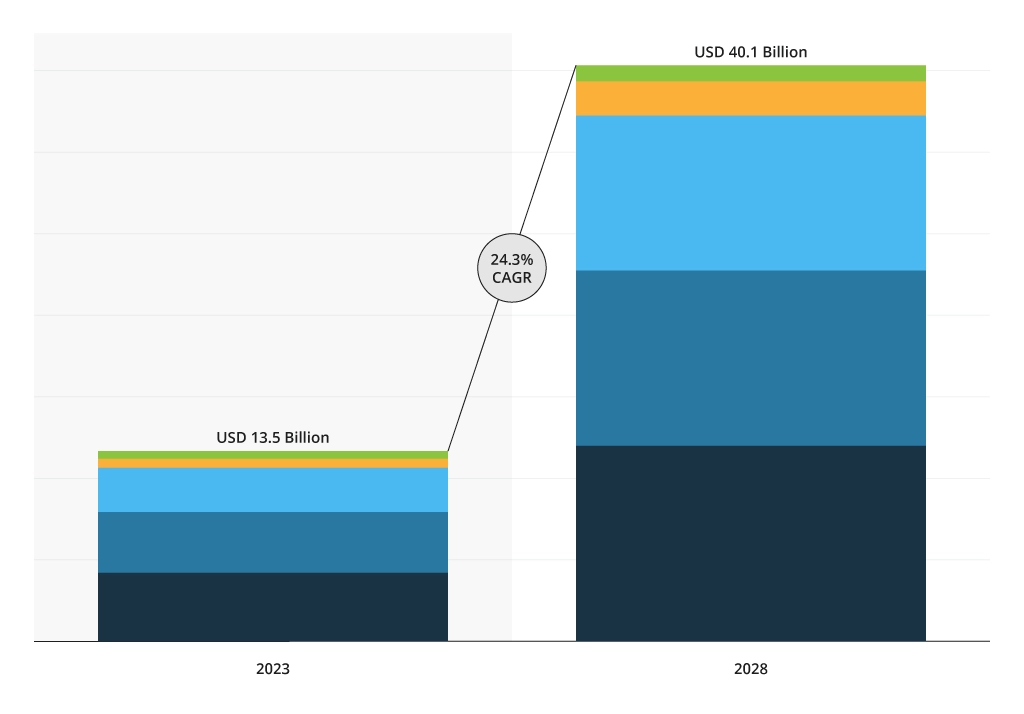
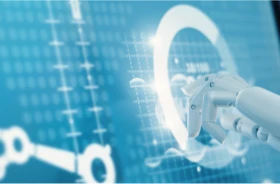
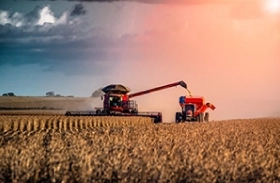
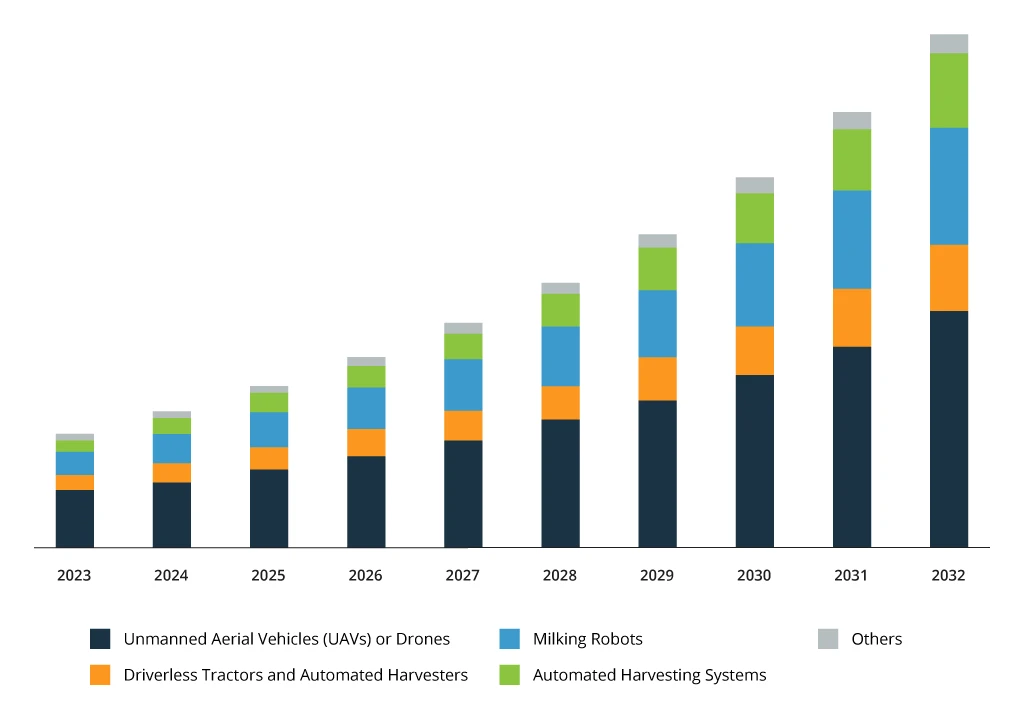
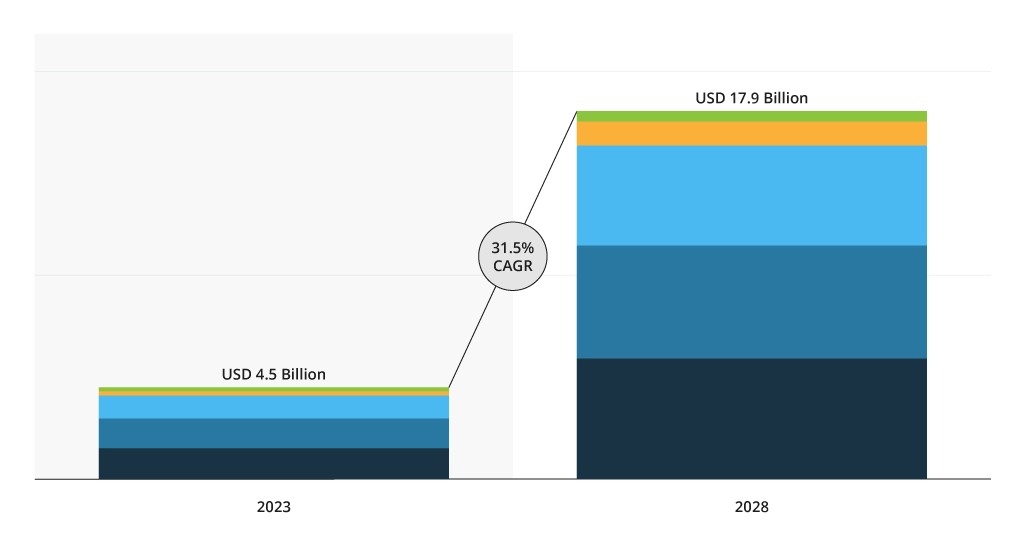
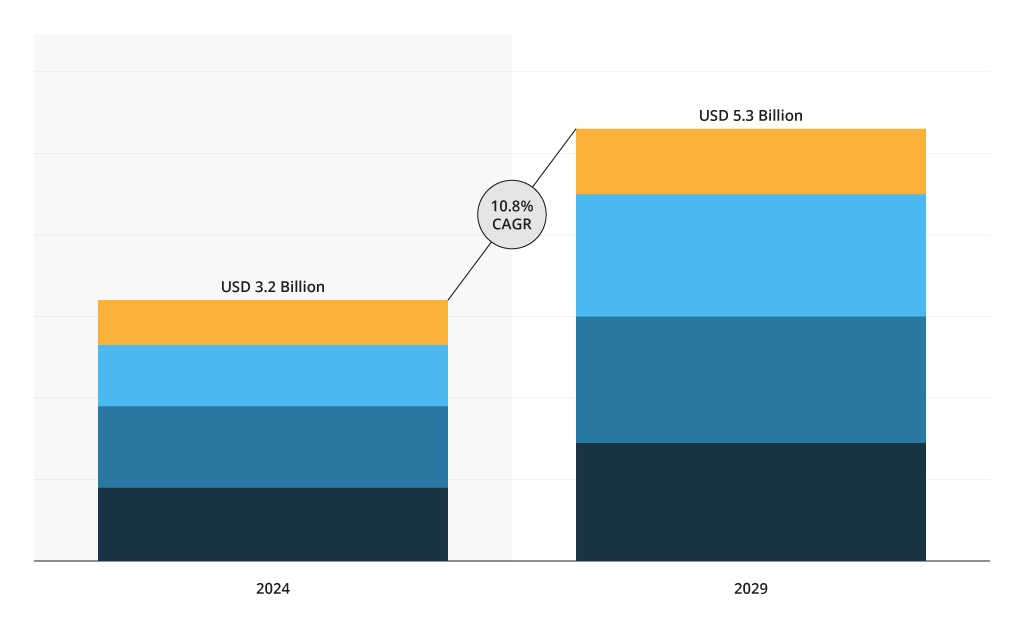
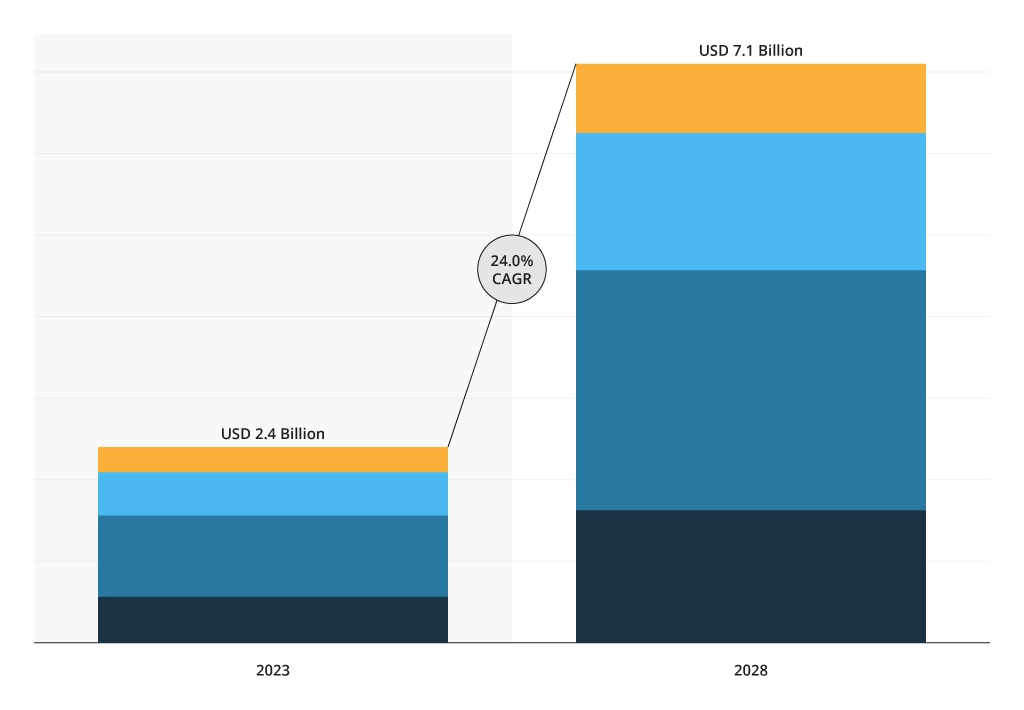
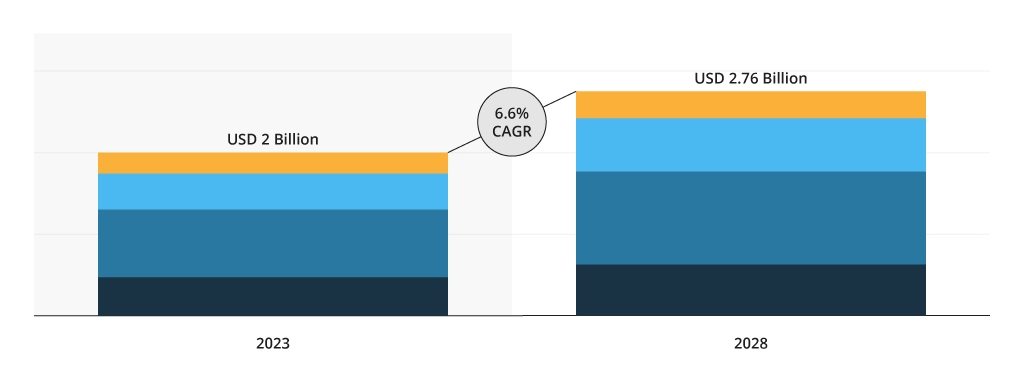

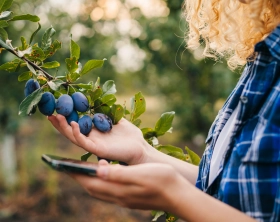
![Big Data Use Cases in Agriculture [thumbnail]](/uploads/media/thumbnail-280x222-key-agro-challenges-solved-by-advanced-data-analytics.webp)
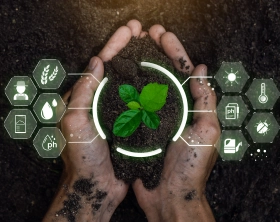
![Hyperautomation Complex tasks in Agriculture [Thumbnail]](/uploads/media/thumbnail-280x222-hyperautomation-complex-tasks.webp)
![IoT as the Core of Digital Farming and Agriculture [thumbnail]](/uploads/media/280x222-iot-as-the-core-of-digital-farming-and-agriculture.webp)
![RPA Bots in Agriculture [thumbnail]](/uploads/media/thumbnail-280x222-the-potential-of-RPA-bots-in-agri.webp)
![Technology for Agriculture [thumbnail]](/uploads/media/thumbnail-280x222.webp)